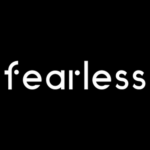Digital
- Marketing
- Campaigns
- Strategy
- Design
- Social Media
- Development
- Optimisation
We make all things ‘digital’ simple but compelling.
Brands we've been digi with.
Our Insights.
How we do it.

Start With
Data & Strategy

Centered Around
People & Impact

Built For
CX & Business Impact
| What are we trying to achieve? |
|---|
|
To inspire people to connect, reach out, buy, join or take action.
|
|
Deliver a visual experience that aligns with your brand.
|
|
Advanced optimisation so more people can find you.
|
|
Ensure the UX is centred around the call to action.
|
|
Connect people to your content.
|
| How are we trying to achieve it? |
|---|
|
Clearly Define the scope of work.
|
|
Collect and analyse the data then build insight.
|
|
Build the strategy with clear key activities and measures.
|
|
Develop the customer journey and build content around each persona.
|
|
Review, design develop and go!
|
Stay Connected.
We'll keep you up to date with all the important stuff, no spam, promise!






















